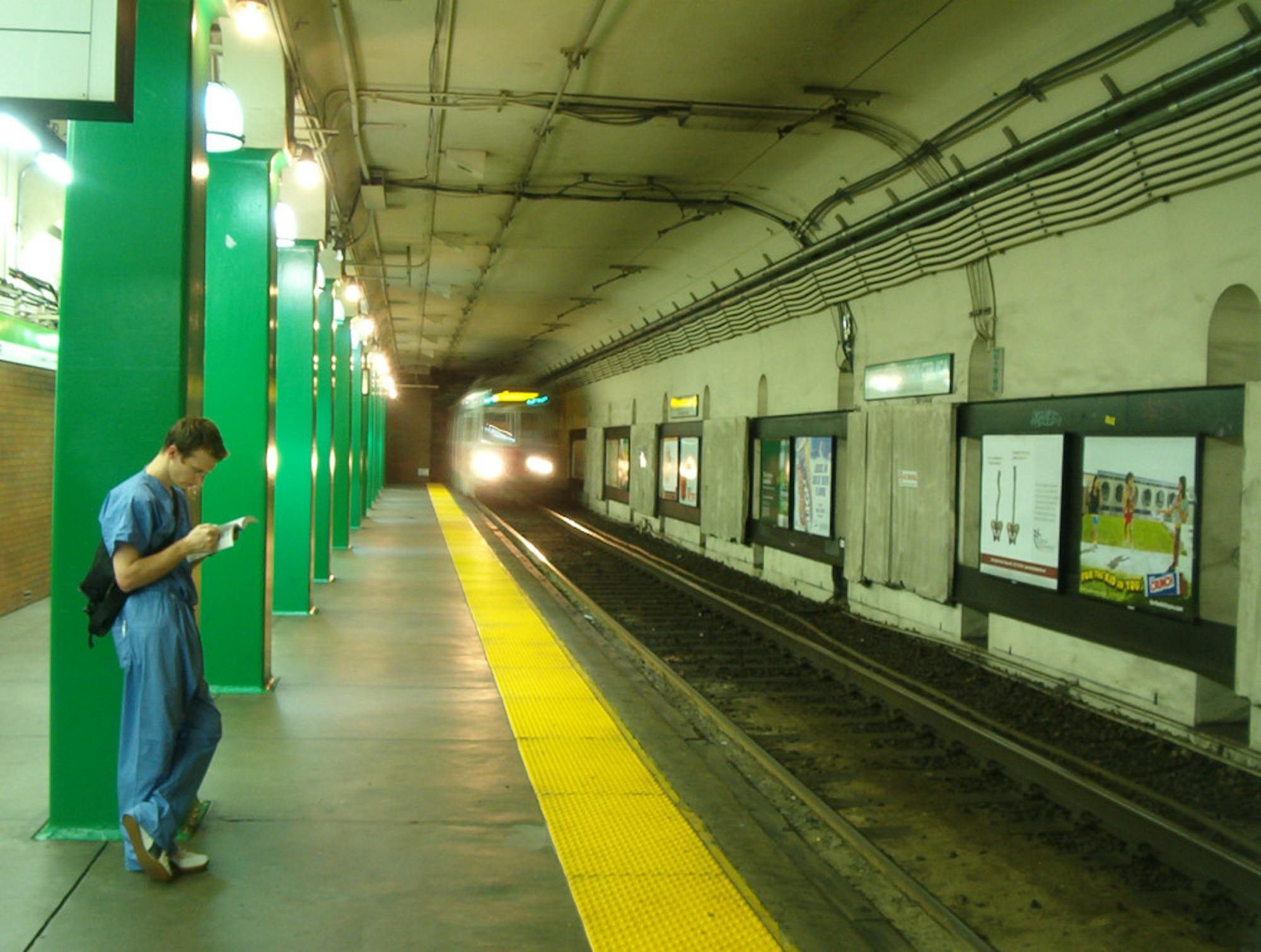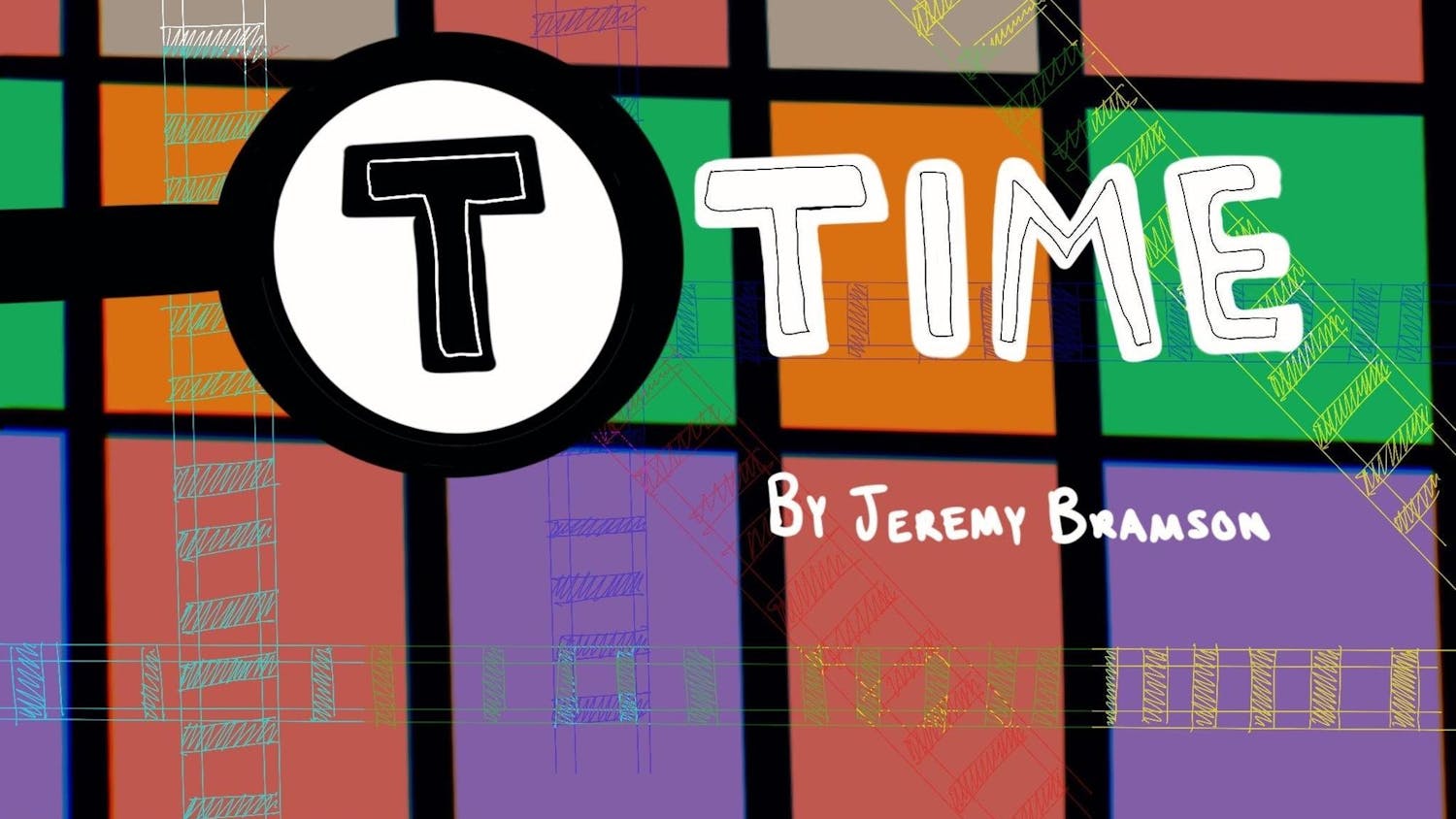This article is the second of two parts. Read the first part here.
Ask any Boston resident to name a massively expensive transportation project, and they'll probably tell you about the Big Dig. That project, known officially as the Central Artery/Third Harbor Tunnel Project (CA/T), is ultimately costing the commonwealth $22 billion: costs ballooned to $15 billion as construction peaked and an additional $7 billion in interest payments won't be paid off until 2038, according to a July 17, 2008 Boston.com story.
Almost 10 years after the completion of the Big Dig construction in 2006, the long-awaited Green Line Extension project (GLX) is also massively over budget, with outright cancellation still on the table, a Jan. 11 Boston.com story said. Some blame the legacy of the Big Dig for the MBTA's current budgetary woes, according to a Dec. 29, 2015 Boston Globe story.
Christine Cousineau, a professor of urban and environmental policy and planning, explained that the MBTA has been struggling to pay off accumulated debt for years. Some of this debt, which was the equivalent of the cost of various public transit-related developments that coincided with the Big Dig, was transferred by the state to the MBTA from the Central Artery Project, she said.
According to a statement from the Greater Boston Transportation Justice Coalition, the MBTA spends 30 percent of its annual operating expenses on debt, with some from the central artery and some from the agency's capital plan, a Dec. 24, 2015 Boston Magazine article said. Cousineau said that the debt will make finding more funds for the costly GLX difficult.
"The MBTA is saddled with the [debt]... [now] the project costs more than they had budgeted for, and so they have to find new money on top of all of it, so it's a story of woes piling on top of each other," she said.
Creeping costs
Brad Rawson, director of transportation and infrastructure at the city of Somerville, said that some of the overrun could likely be attributed to "scope creep."
"We essentially, collectively - as a commonwealth, as a region, as stakeholders - inched our way towards a project that got beyond, I think, its core functionality," he said. "As a result, we have, I think, the opportunity to trim pieces of it down."
According to Rawson, a planned maintenance facility for the extension's light rail car fleet could be reduced in size. He also points to some of the proposed stations' futuristic designs as areas where costs could be reduced.
"[The designs] are relatively elaborate, and clearly there are opportunities to slim them down," he said. "Enclosed buildings might be nice to have, but if it's a question between these more ornate station designs and something that just retains a core functionality…clearly collectively we’re going to chose the latter."
Rawson said that the nature of the GLX corridor has meant that the project was bound to be expensive relative to similar light rail projects in other American cities. One explanation is that Somerville is the most densely populated community in New England.
"This is a really, really complex project. We are in a dense, old part of the country," Rawson said. "When you say, cross the Cedar Street Bridge or the School Street Bridge… take a look at that rail corridor and imagine trying to get massive earthworks moving there, and then think about the time and cost of money if you can’t have your construction crews work for more than a couple hours because it's so important to keep the Commuter Rail running."
Rawson pointed out that drainage improvements along the rail rights-of-way that the T has purchased will exceed $100 million by themselves.
"That's not to say that the costs are acceptable; they’re not," he said. "We have to get the costs down to restore public faith, to ensure that we are building the core function of the project."
For her part, Cousineau is not surprised that the project is over budget. She explained that the final costs of large transportation projects are difficult to predict and that first estimates are often incorrect.
"You don’t know about the underground conditions of the soil; you don’t know what other projects are going to be committed along the way," she said. "For instance, in the Big Dig, there were mitigation measures… projects negotiated with surrounding communities to offset the negative impacts. There are modifications that are brought about by the public review process, those extra design costs, when engineers have to go back to the drawing board and redo plans, that is very expensive."
A MBTA presentation from August 2015 also identifies market forces as potential cost drivers; estimates were made when costs in the post-recession American construction industry were much lower than they are today.
Best practices?
Along with design overreach and forces beyond the T's control, many cite problems with the implementation of a controversial new contract procurement method as a significant contributor to the overrun.
According to a Sept. 14, 2015 Boston Globe article, the Construction Manager/General Contractor (CM/GC) procurement method, used by the MBTA to find the GLX contractor, split a major part of the project up into phases, selected a construction company and allowed them to submit bids for each phase independently. The T negotiated with the help of an outside company that provided its own estimates.
Critics of CM/GC say it drives up costs by reducing competition, as more traditional methods take multiple bids from competing companies into consideration before making a selection.
Rawson explained that the T and the Commonwealth initially went with CM/GC because it was a speedier process that put the GLX in a stronger position to compete for its federal grant.
"The State legislature endorsed it, took a special legislative action to design and administer [it] in a very public process about four years ago," he said. "It served a purpose; the idea was that it would allow certain elements of the advanced engineering to proceed while certain elements of the early table-setting construction were happening, and so essentially it put Massachusetts on a path to competing for the Federal New Starts grant."
A study commissioned by MassDOT and the MBTA boiled CM/GC method's issues down to ineffective implementation. According to Rawson, the fact that CM/GC was untested in Massachusetts and that it was being used for the first time on a large and complicated process likely contributed to an atmosphere of disorder in which best practices went out the window.
"The MBTA and MassDOT consultants that have been working for the last six...or eight weeks...have found that the procedure was not followed as intended," he said. "Elements of protection were baked into the legislation that involved what is known as guaranteed maximum prices… and that those guaranteed maximum prices were essentially not treated that way."
That is to say, Rawson explained, that contractor White-Skanska-Kiewit's supposed "guaranteed" price ceilings for phase bids were surpassed as they continued to submit change orders.
"They were knowing very well that this was hugely favorable and there’s no resistance because everybody’s anxious to see this; [they] figured maybe there won’t be as much political attention." Somerville Alderman-at-large Jack Connolly said.
Four contractors, including White-Skanska-Kiewit, were dropped from the project last month, the Sept. 14, 2015 Globe story said. After that, the MassDOT and the MBTA resolved to move forward with a different procurement method.
Union Square
In the aforementioned resolution, the twin boards overseeing the project made it clear that all options, including cancellation, will remain on the table until costs can be reduced. Last week, MBTA Fiscal Control Board Chairman Joseph Aiello said that cutbacks will have to be "on the side of brutal," as reported in a Jan. 21 Boston Globe article.Aside from cancellation, one of the more "brutal" steps being considered is the elimination of the planned station at Somerville's Union Square, replacing the rail link with shuttle bus service, according to a Dec. 9 Boston Globe article. Somerville Ward 5 Alderman Mark Niedergang said the step would be disastrous.
"The release of a draft neighborhood plan and a fiscal impact analysis... shows that there will be tens of billions of dollars invested in Union Square over the next generation based on the T station being there,"he said. "If the T station isn’t there, then all the work that we’ve done, I think, will be for naught."
Somerville's "Somerville by Design" draft plans for future buildup in Union Square say that planned development could bring over 10,000 jobs to that area alone.
But that's not the only reason why Rawson thinks the MBTA won't cut Union; cutting the station could jeopardize the GLX's billion-dollar federal grant.
"The federal grant is a legal contract between the Federal government and the Commonwealth that says we will build the Green Line with a total of six stations," he said. "The idea of substituting a different mode of transportation is problematic."
This problem is not just because of the federal contract, however, but also because of the Union Square stop's role in fulfilling the terms of the air quality lawsuit that is the GLX's mandate, he said.
"There was tremendous opportunity for pent up demand of ridership in... Union Square," Rawson said. "The numbers were run… [Union Square] was the air quality reduction item that pushed the Green Line into the place where it needed to be. Union Square literally is the difference between the Green Line achieving its emissions reductions and not."
A necessary project
Given the project's potential value, locals are worried about the possibility of cancellation.The mobility benefits are unquestionable: ridership is expected to reach 49,000 daily trips, according to a Dec. 14, 2015 Streetsblog USA article.
"There’s a reason that the Federal government chose to fund it," Rawsonsaid. "The project will deliver so many tangible benefits for mobility, for public health, for economic development, [for] job creation."
Christine Barber, 34th Middlesex District state representative, is willing to work through the hurdles to keep the project going.
"We’ve been working hard to advocate and hold [the Baker administration's] feet to the fire to continue working on it, even though there have been challenges in the last year especially," she said.
New budget estimates are expected this April, and a new financing plan this May, according to a Jan. 16 Boston Globe article.Until then, as Secretary of Transporation Stephanie Pollack said in a Dec. 9 Boston.com article, all options "will remain on the table."






